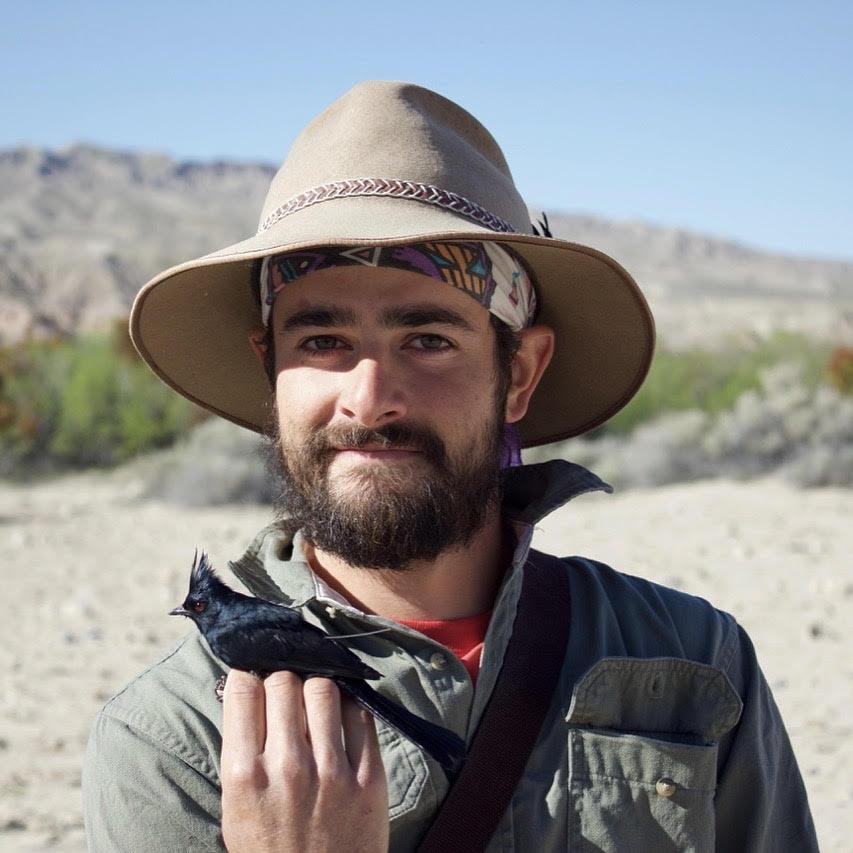If you’ve ever been on Twitter, you may be familiar with a video series called #AwesomeBirds hosted by a user named @evornithology.
That user is assistant professor of biological sciences Daniel Baldassarre. Baldassarre has made a name for himself on the popular social media platform -- so much so that when the National Audubon Society was looking for data for its new digital platform on bird migration, they reached out to him.
“I had no clue this existed or they were working on it,” Baldassarre said. “One of their research staff who was in charge of finding people who had data to contribute to this big database contacted me out of the blue. I think he found me on Twitter.”
A first of its kind, with intent to be accessible for all, the National Audubon Society and nine partner organizations announced the Bird Migration Explorer (www.birdmigrationexplorer.org), a digital platform that hosts migration data for 458 bird species that breed in the United States and Canada. Per the Audubon Society, this free, interactive platform, available in English and Spanish, allows users to see the most complete data collected on migratory species in their neighborhoods and where those birds go throughout the year.
In a press statement released by the Audubon Society, Melanie Smith, director of the Bird Migration Explorer for Audubon’s Migratory Bird Initiative said, “We’re in a golden age of bird migration research and technology, and by consolidating all of these data into one interactive platform, we can better understand which places can have the biggest impact to help migratory birds. The unprecedented volume and integration of the Bird Migration Explorer’s data can lead to better conservation efforts and results.”
“A report recently came out from Bird Life International which found that about half of bird species in the world are facing population declines and about one-eighth are threatened with extinction,” Baldassarre said. “We are in crunch time in terms of learning about how we can help birds –- so understanding where they are and where they spend time in different parts of the year is an important part of that.”
Baladassarre emphasized Smith’s point that much of what makes studying bird migration important is ensuring conservation efforts among bird species. Baldassarre also highlights that this tool is one of the first of its kind where users can overlay conservation risks of certain bird species to see where they are experiencing potential threats.
“It’s one of the things that makes birds more complex to think about, especially if we are trying to think of ways to protect them and what threats they face,” Baldassarre said. “A lot of birds are spending time in very, very different parts of the planet throughout the year. One part of the year they may be doing OK, and the other part of the year they may not be doing OK. Being able to put all of that together on a big scale and looking at multiple different species is an important thing to do.”
Creating a tool such as the Bird Migration Explorer is not only for those whose primary career or study is ornithology or birds, but it is also a great tool for those who bird in their free time or as a hobby.
Audubon Society has also released a guide for those wishing to learn more about how to use the Bird Migration Explorer but are unsure where to start.
Phainopepla migration
Baldassarre studied and published research on a bird species known as the phainopepla while in the Mojave Desert in California.
The phainopepla is a small bird that looks like a cardinal, but as Baldassarre points out, “many people describe them as a goth cardinal, or a cardinal dipped in pen ink.” (See picture above.)
To track its migratory behavior, Baldassarre attached a small GPS backpack on the phainopeplas before their migratory season. The data that came back was remarkable.
“I went back to the same spot a year later, took the backpacks off and downloaded the data,” Baldassarre said. “What I found is that these guys are very, very weird -- they’re one of the few birds we know that do this, maybe two or three other birds do this. Rather than having a place to breed and a place to spend the winter and just go back and forth, the phainopepla have two separate places they breed in spring and summer and travel back and forth between those locations.”
Baldassarre’s data helps researchers see that there may be more to the story of migration. The phainopepla breed in spring in the Mojave desert, disappear and pop up again to breed a second time in summer on the coast of California in the oak woodlands, Baldassarre noted.
Upon using Audubon’s Bird Migration Explorer for the phainopepla, you can also listen to its bird song, and view species migration data that Baldassarre provided, species connections and conservation challenges.
“As a researcher, it can be easy to put the blinders on,” Baldassarre said. “Tools like this enable us to look at the bigger picture and remind us how our research can help protect the animals we are interested in and study.”




